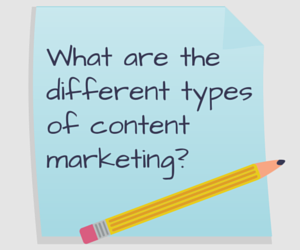 As every marketer knows, “Content is King”. This phrase continues to be more true each year as both search engines and consumer expectations of brands change. To help us take a deep dive into the importance and power of having a strong content strategy, we sat down with a St. Louis specialist, Matt Kamp. Matt Kamp is the director of strategic partnerships at Influence & Co., which helps companies highlight key individuals as thought leaders by developing and publishing content to reach their audiences online.
As every marketer knows, “Content is King”. This phrase continues to be more true each year as both search engines and consumer expectations of brands change. To help us take a deep dive into the importance and power of having a strong content strategy, we sat down with a St. Louis specialist, Matt Kamp. Matt Kamp is the director of strategic partnerships at Influence & Co., which helps companies highlight key individuals as thought leaders by developing and publishing content to reach their audiences online.
Why is content marketing so important to marketing strategies?
In today’s consumer landscape, content is marketing. It’s the fuel that makes the rest of your marketing run. Google rewards engaging content with high search rankings, and the success (or failure) of any social media post, online ad, or other marketing tactic boils down to the quality of your content. High-quality content gives something valuable to the right audience. Your digital marketing strategy should begin with a solid content foundation and go from there.
What are the different types of content marketing?
 Content marketing is a broad term. Any marketing that revolves around educational messaging intended to reach potential customers can be considered content marketing. Typically, marketers create this to increase awareness, gain credibility, and build trust with consumers.
Content marketing is a broad term. Any marketing that revolves around educational messaging intended to reach potential customers can be considered content marketing. Typically, marketers create this to increase awareness, gain credibility, and build trust with consumers.
Content marketing can take many shapes, including social media posts, videos, blog posts, infographics, and books. At Influence & Co., we think of the content marketing funnel in three levels of distribution: guest-contributed content, company blog content, and gated content.
How do you determine what kind of information your audience wants?
Before diving into content creation, outline a content marketing strategy. Include elements such as your goals, tone, communication objective, key differentiators, areas of expertise, and audience personas. Use this as your guiding light. This roadmap should be the first thing you consult to create content your audience wants. With a documented strategy, you should always have an answer for the question, “Why is this valuable?”
Once you have this foundation, you can brainstorm topics. Start by listing all of your target audience’s frequently asked questions. What do they want and need to know? Create educational articles that answer each of these questions, showcase your expertise, and position you as a credible authority on the subject.
How should companies promote their content?
Companies can promote and distribute content in many ways. Again, high-quality content is the fuel for the rest of your marketing engine. Integrate it into everything from your social media channels to your company newsletter. Consider how to use content to sell and build relationships. Get creative, and use your content in the hiring process. If your goal is inbound lead generation or site traffic, paid distribution tools and services may help. Zemanta and HiP B2B are two partners Influence & Co. loves.
Could you share a few of your favorite content marketing examples?
Some content marketing companies practice what they preach. Look to big players with active, engaged blogs. HubSpot and KISSmetrics immediately come to mind. They focus on educating their readers with thought-provoking content in blog posts, whitepapers, and webinars.
